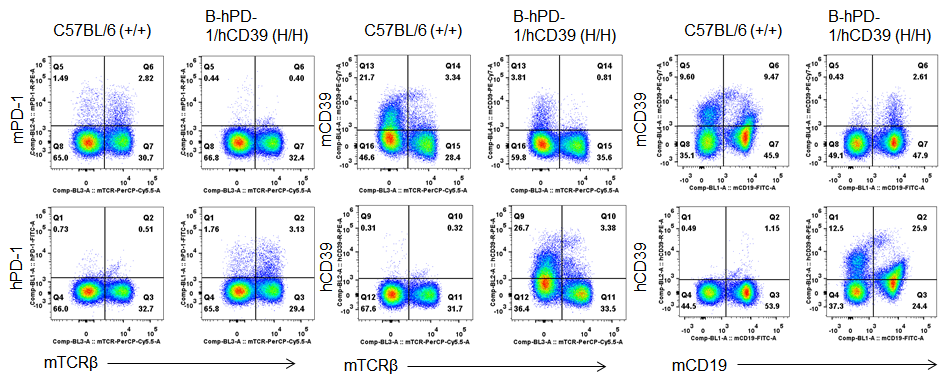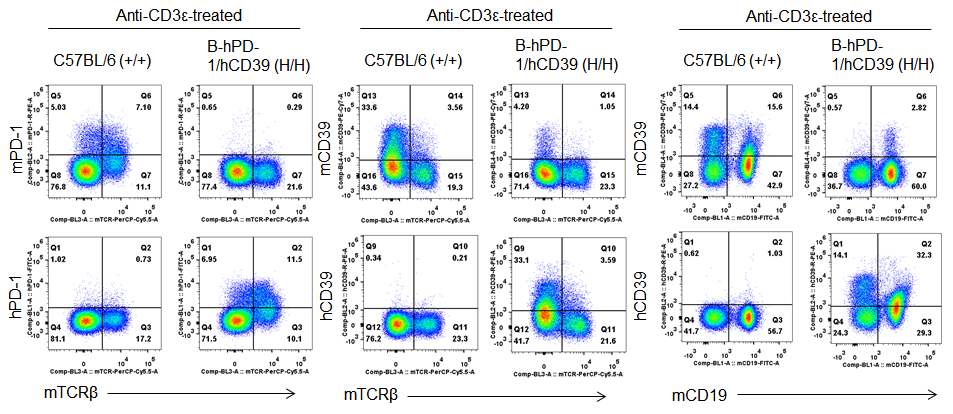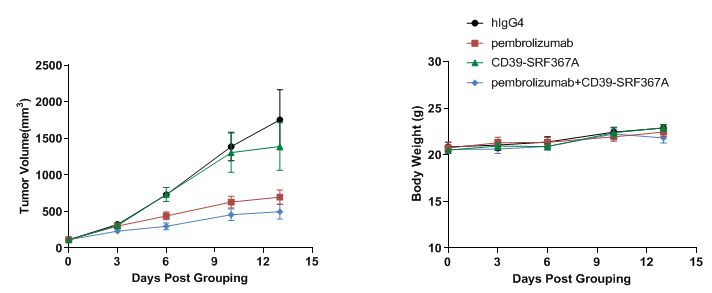Description
Protein expression analysis
Combination therapy of hCD39 Ab and hPD-1 A
Protein expression analysis
Strain specific PD-1 and CD39 expression analysis in homozygous B-hPD-1/hCD39 mice by flow cytometry. Splenocytes were collected from WT and homozygous B-hPD-1/hCD39 mice, and analyzed by flow cytometry with species-specific anti-PD-1 and anti-CD39 antibody. Mouse PD-1 and CD39 were detectable in WT mice. Human PD-1 and CD39 were exclusively detectable in homozygous B-hPD-1/hCD39 mice but not WT mice.
Strain specific PD-1 and CD39 expression analysis in homozygous B-hPD-1/hCD39 mice by flow cytometry. Splenocytes were collected from WT and homozygous B-hPD-1/hCD39 mice stimulated with anti-CD3ε in vivo, and analyzed by flow cytometry with species-specific anti-PD-1 and anti-CD39 antibody. Mouse PD-1 and CD39 were detectable in WT mice. Human PD-1 and CD39 were exclusively detectable in homozygous B-hPD-1/hCD39 mice but not WT mice.
Combination therapy of hCD39 Ab and hPD-1 Ab
Antitumor activity of anti-hCD39 antibody (SRF367A, in house) combined with anti-hPD-1 antibody (pembrolizumab, in house) in B-hPD-1/hCD39 mice. (A) Anti-hCD39 antibody combined with anti-hPD-1 antibody inhibited MC38 tumor growth in B-hPD-1/hCD39 mice. Murine colon cancer B-hPD-L1 MC38 cells (5×105) were subcutaneously implanted into homozygous B-hPD-1/hCD39 mice (female, 7-8 week-old, n=6). Mice were grouped when tumor volume reached approximately 100-150 mm3, at which time they were treated with anti-hCD39 antibody combined with anti-hPD-1 antibody (B) Body weight changes during treatment. As shown in panel A, combination of anti-hCD39 and anti-hPD-1 antibody shows more inhibitory effects than individual groups, demonstrating that the B-hPD-1/hCD39 mice provide a powerful preclinical model for in vivo evaluating combination therapy efficacy of hCD39 antibodies and hPD-1 antibodies . Values are expressed as mean ± SEM.





